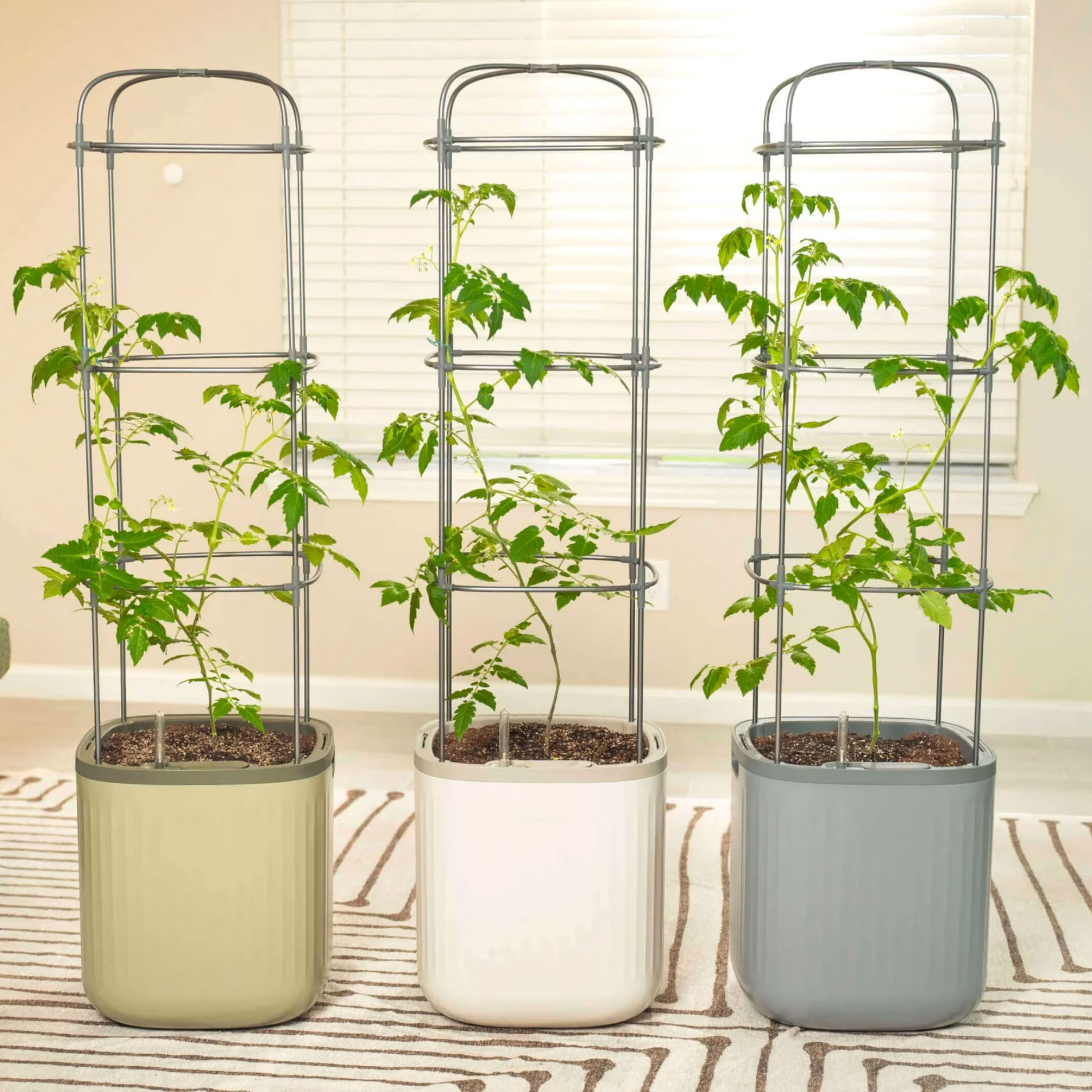Easy Vertical Gardening Hacks For Beginners: Why You Should Grow Up, And 3 Ways To Do It!
If you’re short on space or keen to make the most of every inch, vertical gardening is the way to grow. We explain how to plan & plant up with three easy building methods


A clever and creative vertical gardening approach may be just what your space needs to go from so-so to stunning. These up-and-down plantings – where plants are elevated, towered up, encouraged to climb, or staggered vertically – can increase your growing horizons in more ways than one. Maybe you’re looking for cheap fence ideas in a quiet corner of your yard? Maybe you need inventive ways to grow specific crops in a way that helps support them and encourage maximum growth? Or maybe you fancy growing a green wall for an instant wow factor?
A vertical garden can take several forms, and is not just a lovely and unusual addition to your regular garden, but it also has many advantages. But how do you get started, what plants are best, and which vertical methods should you try? Here, we reveal some of the main considerations, and show you three easy methods for ‘growing up’ with your gardening ambitions: trellis, stake and cage. Follow our guide on how to put the basics in place to raise your planting game to the skies!
What Is Vertical Gardening?
Vertical growing means growing up and down, with plants staggered vertically rather than horizontally on the ground. This could be growing crops that climb – or it could be a climbing ornamental such as a rose or clematis. It also incorporates an element of man-made elevation based on living situations or planting intentions – for example, gardening with a balcony or an elevated planter, a tower garden, stacks of pallets or hanging baskets.
There are no detailed specifications for a vertical garden, and they can take many different forms. For example, growing pole beans up a trellis is a small vertical garden. But most take the form of rows of plants staggered vertically. Where would be a good place to put in a vertical garden? Try a balcony, fence, patio or wall.
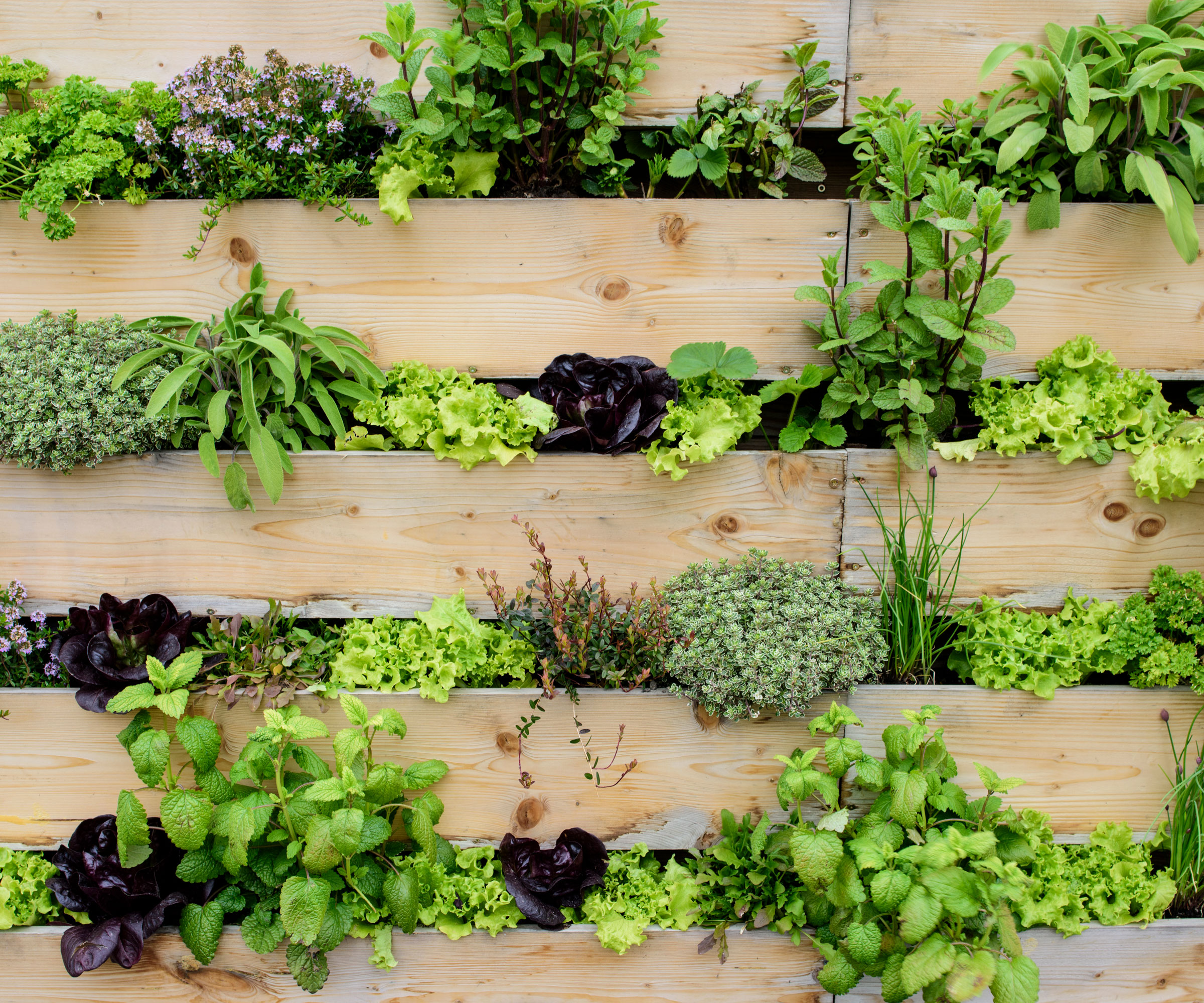
Benefits of Vertical Gardening
Esthetically, vertical gardening creates interest in a garden. For instance, a green wall of plants can be a striking focal point. But that’s just the beginning. One of the hardest parts of gardening for seniors is getting down to soil level to weed, seed, and harvest. With vertical gardens, there is no need to work on your knees. The plants are at eye level or almost, and easy to take care of.
Another key vertical gardening benefit is being able to free up vital growing space. This type of growing enables you to maximize even small domestic areas (or footprints), utilizing walls, fences, trees, trellises and other structures where ground-level space is in short supply. Even aspirational gardeners living in tiny high-rise flats can successfully grow a range of crops and ornamental plants with vertical gardening.
In addition, the up-down shape of the garden makes efficient watering easier. It allows you to catch falling rain above ground, which then filters excess water down to lower rows. This is one way to tackle issues of water runoff and excessive rain overflow. It helps local water systems by lessening the effect of stormwater on the landscape.
Furthermore, for certain plants that are naturally inclined to climb, vertical gardening allows you to provide ample support for healthier, more prolific plants – whether you are growing ornamentals or edibles.
Sign up for the Gardening Know How newsletter today and receive a free copy of our e-book "How to Grow Delicious Tomatoes".
Best Plants for Vertical Gardening
There are many different types of vertical gardens. If you create a structure that will hold plant pots on shelves, almost any species of plant will work. Otherwise, you’ll be relying on flowering vines and evergreen climbing vines to grow up and cover the wall. Any plant that can crawl up a wall or hang down from the top is ideal for inventive vertical gardening ideas.
On the ornamental side, choose flowering plants that present with well supported flower heads and which are stable and adept at climbing or trailing across a trellis or pergola – so, flowering plants like climbing roses, passionflowers, clematis vine varieties, wisteria, Virginia creeper, chocolate vine, and so on.
If you are looking to grow a vertical vegetable garden, good edible plants include pole beans, tomatoes, and cucumbers. If you install a strong support system, heavier fruit and veggies are also possible including melons, gourds, and pumpkins. Clever vertical vegetable gardening ideas will enable plants to flourish in relatively compact quarters, utilizing light and height while allowing plants to drain and feed.

How to Build a Vertical Garden
Before you jump into building a vertical garden, decide first which crops you’d like to grow. This choice can make a big difference in how to construct the garden. You can use very simple structures for creative raised garden ideas, like wooden crates stuffed with potting soil, pots hung on wire, shelves attached to a fence with zip ties, or hanging plastic bottles filled with soil. However, for the best supported structures for vertical gardening, consider one of these effective plant-lifting methods: trellising, staking, and caging.
1. Trellising
Trellising involves building sturdy vertical supports that can hold up a lattice for plants to climb up. A creative homemade trellis could be something simple, like using steel t-posts as supports, connecting them horizontally with wire or wood pieces at the top and bottom. You could also use wooden supports that are strong enough to hold the mature weight of your crops.
To make effective trellising in gardens, insert the posts several feet into the ground to ensure stability. Use the trellis structure to hang plastic netting, wood lattice, nylon fencing, or woven wire cattle fencing materials that allow plants to climb easily.
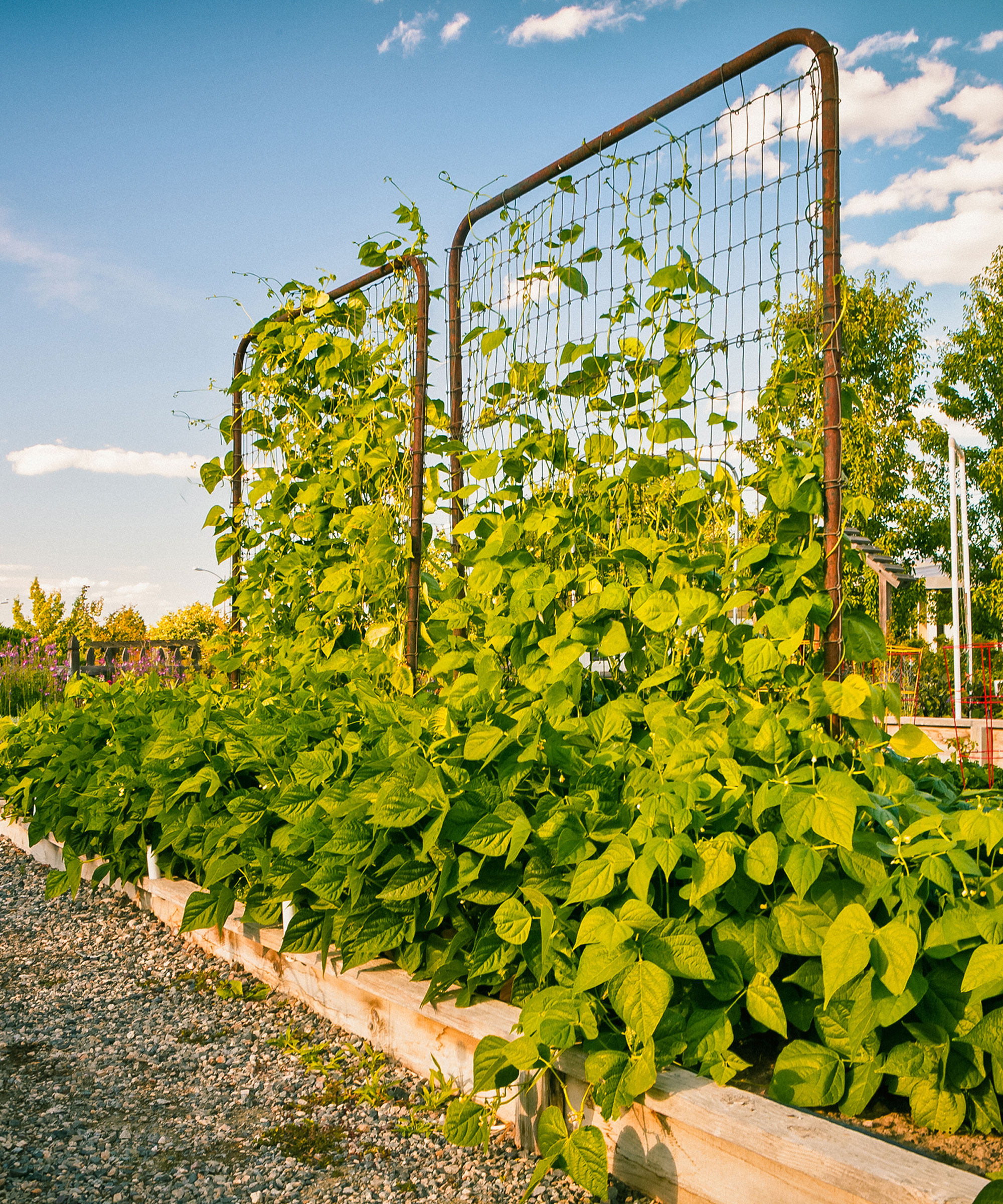
2. Staking
When choosing plant support, staking is a common garden practice. You can use wooden stakes, rebar stakes, tomato stakes, or PVC stakes cut to the preferred length. Make sure wooden stakes are thick enough to hold up your plants. Stakes can be made of wood, bamboo, PVC, metal conduit, or rebar, and cut to the desired length with simple home tools. Wooden stakes should be at least one inch thick to ensure sufficient strength to hold growing plants.
A single stake can work well for a single tomato or pepper plant. For rows of tomatoes or peppers, install stakes between young plants. When the plants grow to about a foot high, weave lines of garden twine between the stakes, wrapping it once around each individual stake. The twine holds the plants upright. As the plants grow taller, add additional lines of twine.
For longer rows of tomatoes and peppers, consider the ‘stake and weave’ method. To begin, drive a tall stake between every other plant when the plants are still small. When the plants are 12 inches (30cm) tall, weave the first line of garden twine between the stakes 10 inches (25cm) off the ground, wrapping the twine once around each stake. The plants are held upright between the two lines of twine woven on either side of the stakes.

3. Caging
When you are contemplating the heaviest crops, like pumpkins or melons, caging is a good way to go. These crops can be too heavy to be held up by twine or trellising. The caging method also works well for supporting the vines of indeterminate tomatoes.
You can buy pre-made cages, or you can easily make them out of chicken wire. Use a few stakes to anchor each cage to the ground. Sizing depends on the crops and how they are spaced. If the crops are especially heavy, add slings made from mesh bags to cradle the fruit.
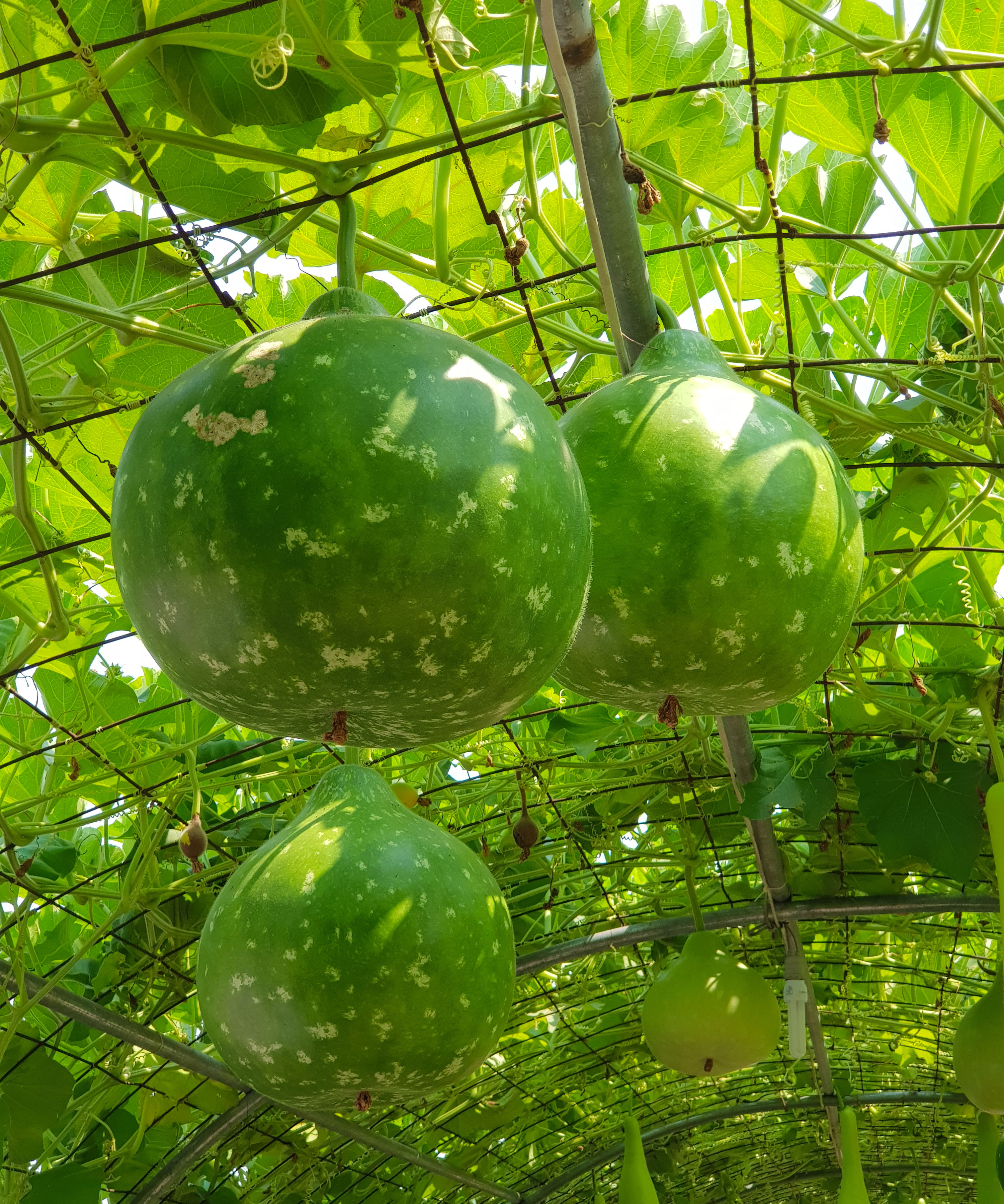
How to Care for a Vertical Garden
Vertical gardens require no weeding or row tilling. But they do need water. While outdoor vertical gardens will get some irrigation from rainfall, they will need water in dry periods. Be sure that any containers used have good drain holes so that excess water can drain. You can add a water-soluble fertilizer to provide nutrients for the plants.
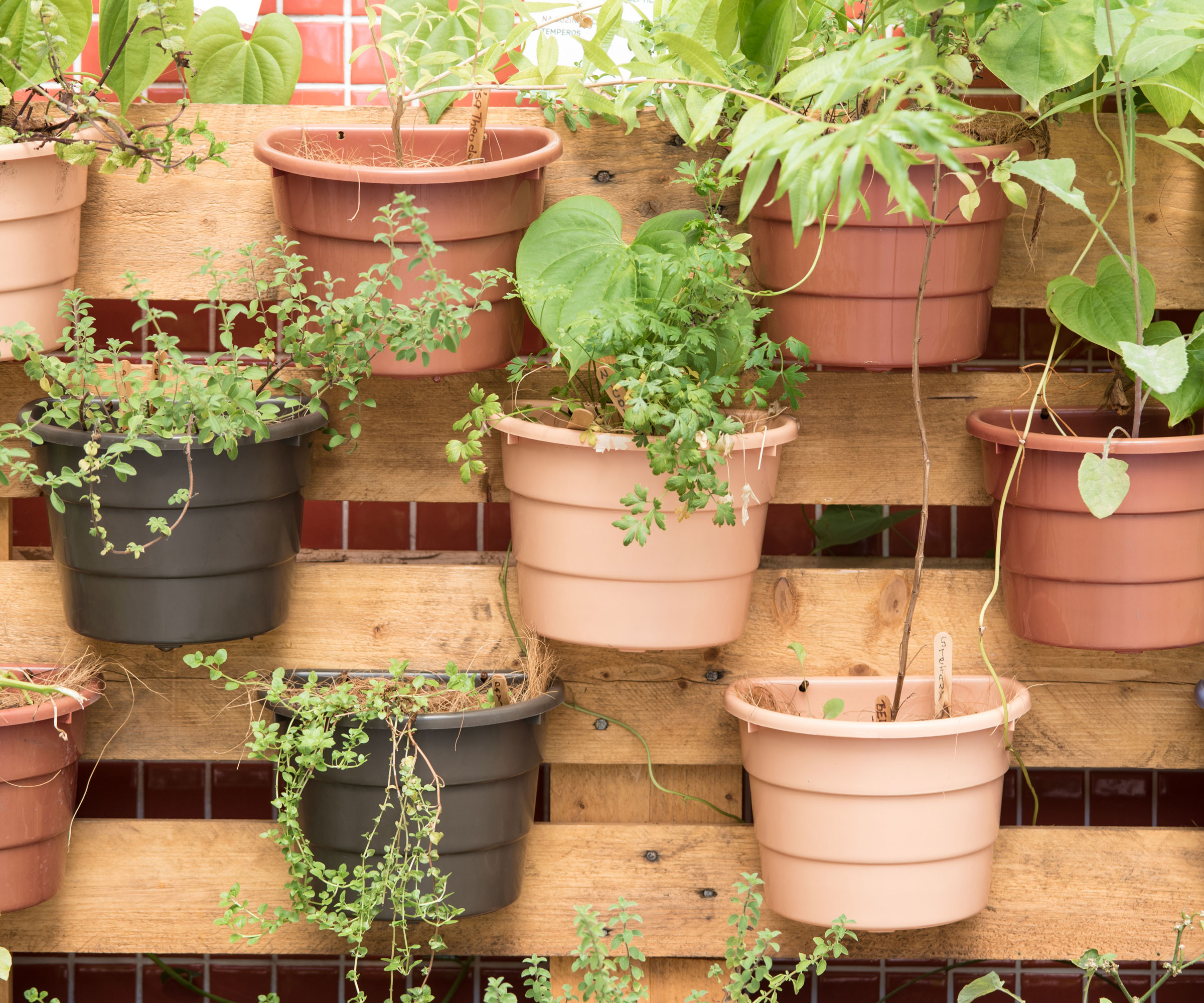
Frequently Asked Questions
Are there any drawbacks to using vertical gardens?
You must install a vertical garden, designing and constructing a structure – whether a trellis, stakes or something else – or else have a professional install it. Doing it yourself requires basic DIY skills and – ideally – power equipment. Especially when containers are involved, you may have to water vertical gardens more than in-ground plants. Finally, if you build an indoor vertical garden, it can attract insects.
What is the difference between vertical & hydroponic gardening?
Vertical gardening and hydroponic gardening are two different methods of growing plants. Both are space-efficient and good for city environments. Vertical gardening involves growing plants in vertically stacked layers, but soil and compost are usually used as growing mediums. Hydroponics involves growing plants without soil in nutrient-rich water solutions.
This article features products available from third party vendors on the Gardening Know How Shop.

Teo Spengler is a master gardener and a docent at the San Francisco Botanical Garden, where she hosts public tours. She has studied horticulture and written about nature, trees, plants, and gardening for more than two decades, following a career as an attorney and legal writer. Her extended family includes some 30 houseplants and hundreds of outdoor plants, including 250 trees, which are her main passion. Spengler currently splits her life between San Francisco and the French Basque Country, though she was raised in Alaska, giving her experience of gardening in a range of climates.
